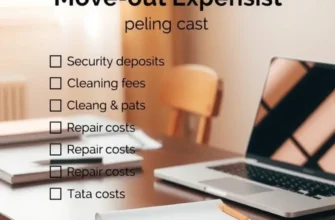Renting can often feel overwhelming, especially for young professionals, first-time renters, students, couples, and families navigating their leases. One critical aspect of renting is knowing your lease exit options, which can save you money, time, and stress. Whether you’re contemplating a job relocation, a lifestyle change, or simply wanting to upgrade your living conditions, understanding lease exit strategies is essential. This guide offers actionable insights and tips to help you confidently approach the end of your lease. From understanding what your lease terms entail to exploring potential financial responsibilities, we aim to empower you with clarity and knowledge. With the right strategy, you can exit your lease smoothly and begin the next chapter of your life without unnecessary complications.
Understanding Your Lease Terms

When planning to exit a lease, understanding your lease agreement is critical. The details laid out in these documents dictate your rights and obligations. Recognizing key clauses on breaks, penalties, and notice periods can provide opportunities for a smooth transition.
Start by thoroughly reading the lease agreement. Leases are often long and filled with legal jargon. However, being diligent now can save you from complications later. Each clause in the lease can have significant financial implications. Familiarize yourself with the specific language used and consider seeking clarification from a legal professional if anything is unclear.
Break Clauses: These clauses allow tenants to terminate a lease early under specific conditions. They can be a lifesaver if your life circumstances change unexpectedly. Look for any mention of “break clause” or “early termination clause” in your lease. Ensure you understand the conditions under which it can be activated and any associated fees.
Penalties: Unplanned lease termination usually involves penalties. These could range from losing your security deposit to paying a few months’ rent. Check the lease for penalty amounts and the process for negotiating these fees, if possible.
Notice Periods: Typically, leases require a formal notice before vacating. Notice periods might vary from 30 to 90 days. Understand your lease’s specific requirements and plan accordingly to avoid additional fees.
Finding flexibility in your lease often involves negotiation. Before engaging with your landlord or property manager, ensure you have a clear grasp of the market norms and lease terms. The link between staying informed and negotiating effectively cannot be overstated. Consider consulting additional resources on financial planning for renters to bolster your understanding of how lease obligations fit into your broader financial picture. Check out this linked article for further insights.
Additionally, examine other aspects that might be leveraged for flexibility. Some landlords may permit lease transfers or subletting. If allowed, these options could offer solutions for exiting without incurring heavy penalties. However, ensure that any subletting or lease transfer adheres to the conditions mentioned in the lease.
Ultimately, your lease is more than just a contract; it’s a roadmap of your rental obligations and rights. Taking the time to dissect and interpret each component can empower you with the knowledge to navigate your lease exit gracefully.
Practical Strategies for Smooth Lease Exits

Leaving a lease can be a daunting task, especially when trying to avoid financial penalties. Several strategies can offer an effective and harmonious exit from your lease agreement.
Negotiating with Your Landlord
Communication is key when considering an early lease termination. Approach your landlord with a clear explanation of your situation. Express your willingness to cooperate in finding a mutually beneficial solution. Many landlords appreciate honesty and may be open to negotiation, particularly if you have been a reliable tenant. Be prepared to offer potential solutions, such as continuing to pay rent until a new tenant is secured. Sometimes, sharing the cost of finding a new tenant or forfeiting your security deposit might also be necessary, but these concessions can lead to a smoother transition.
Exploring Subletting Options
Subletting is another viable strategy to consider. It offers you a chance to pass on the financial responsibility of the lease to another tenant. Before proceeding, review your lease agreement for subletting clauses. Ensure discussing potential sublease plans with your landlord to avoid any misunderstandings and to secure necessary permissions. Subletting allows you to maintain financial relief while ensuring that your obligations to the landlord are still being met. Platforms for finding potential subtenants can streamline this process and match your current rental standards.
Crafting a Smooth Transition Plan
Planning your exit strategy requires more than just notifying your landlord. It is essential to map out a transition plan. Understand your legal rights and responsibilities related to lease termination. Document all communications and agreements with your landlord to avoid disputes later on. Create a timeline that includes important deadlines for notifications and sublease handovers. Checking the checklist of essential steps for moving out can minimize potential disruptions and unexpected costs.
Budgeting Your Final Expenses
Budget management is crucial during this period, as unexpected moving expenses can add up quickly. Calculate the end costs, including any fees for repairs, cleaning, or lease penalties. Factor in moving expenses and consider visiting a local guide to identify affordable options when searching for new accommodations. Having a solid understanding of these costs enables you to allocate resources effectively and ensures a financially sound exit strategy.
For those contemplating a financial plan for renting next steps, exploring financial planning for renters can provide additional insights. Understanding how to strategically plan your finances in line with your lease transition can contribute significantly to a stress-free process.
Forging a path that aligns with your financial and lifestyle needs is vital to a successful lease exit. With attention to detail and proactive management, navigating your way out of a lease need not be a stressful ordeal.
Final words
Exiting a lease can be a major turning point in anyone’s life. By understanding your lease terms and employing practical strategies, you can mitigate financial risks while ensuring a smooth transition. As you approach this important step, keep in mind that proactive communication with your landlord, understanding your financial obligations, and carefully planning your move can make all the difference. Armed with the right knowledge, you can now navigate your lease exit confidently, allowing for a fresh start in your next home.









